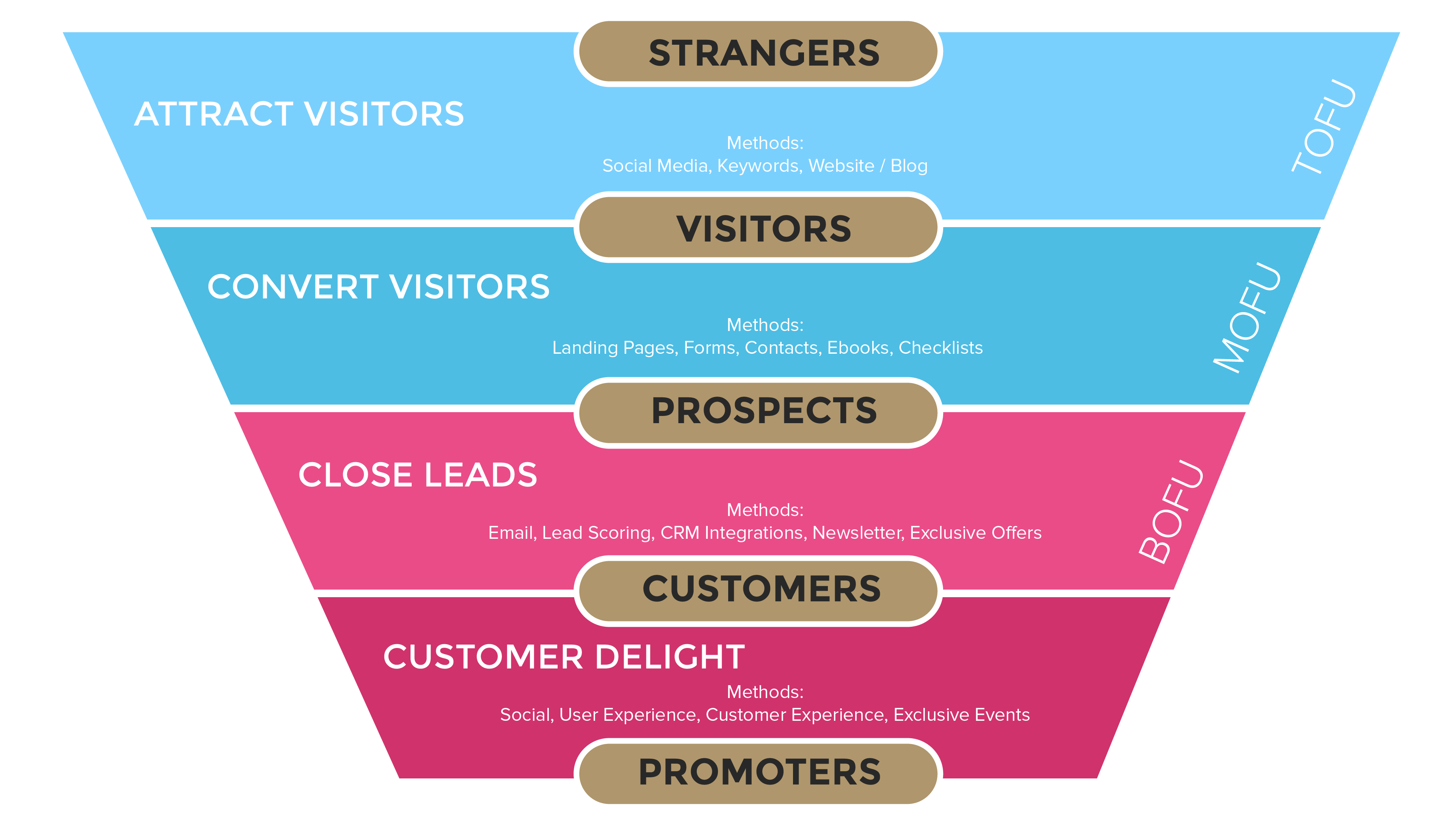Besides being a funny-sounding portmanteau, smarketing is also the current lead-generating standard every business model needs.
The actual term “smarketing” was coined by Hubspot around 2005, and the idea behind it is aligning the sales and marketing teams and processes within a company. It sounds simple in theory, but it takes a lot more effort in practice: after we touch on where this concept came from, we will walk through some essential elements that come together to form a successful smarketing strategy.
So...why do we need it?
At the turn of the century, web capabilities increased tenfold, which in turn shaped how consumers shop and how companies promote in the modern, digital world.
Before, consumers were put in contact with the sales department to answer all their product questions; now, consumers get online, google product and company information, social media accounts, reviews, and more before deciding on a purchase—without picking up the phone even once.
Before, billboards, TV and radio ads, and cold-calling prospects was an effective means of getting leads; now, the inbound methodology—providing value through content—is expected by consumers, and ad blocking online is increasingly popular on personal computers.
According to a study from Aberdeen Group, companies that have strong sales and marketing alignment achieve 20% annual growth rate. If that doesn’t convince you, let’s note that companies with poor sales and marketing alignment actually experience a 4% revenue decline.
Companies that have strong sales and marketing alignment achieve 20% annual growth rate. #smarketing
To truly understand the value of smarketing, however, we need to take a few steps back and identify the existing problem of sales versus marketing, rather than smarketing’s model of sales plus marketing.

Sales vs. Marketing
The sales department’s complaints about marketing include: that marketing doesn’t provide quality leads, they don’t provide enough leads, and the data about the leads is poor.
The biggest challenge that the sales department faces is to have to waste time sorting through multitudes of low-quality leads to find the best bet, and if that doesn’t work, revert to cold-calling prospects like in the olden days.
On the flipside, the marketing department has some grievances about the folks over in sales, too. They tend to complain that: sales doesn’t follow up on the leads they were given effectively, that marketing doesn’t get rightful credit for closed deals, and that they’re out of the loop on the status of leads.
The marketing department’s greatest challenge is delivering a high quantity of only high-quality leads to the sales department in a timely manner.
You know how, many-a-time, clear communication is the inhibitor of avoidable and unfavorable circumstances? Such is the case with smarketing, so let’s go over how to marry the two departments together to improve the overall process.
Steps to Integration

SLA
A sure way to keep sales and marketing on the same page is by putting it down on official paper via a Service Level Agreement (SLA). Think of it as a guidebook for what each side expects from the other and how it will all be monitored.
For the marketing department, the SLA emphasizes the expectation that their leads be of high quality and quantity—this means marketers can’t simply meet the quota with subpar leads or provide too few high-quality leads and leave sales with slim pickings.
The sales department’s dependency on the SLA is to help determine the depth and frequency of qualified lead pursuit—this ensures that the sales team does not take its sweet time and cannot abandon a quality lead before it’s justifiable.
By having a document that outlines that activities that both teams perform and specific goals that should be completed, the SLA effectively holds everyone accountable and provides fairness and transparency for all.
Now, it would be nice to write up one single SLA rendition and call it good, but that’s not how the business environment works: constant change in the market requires constant adaptation on the internal side of things. So, while the SLA in general will stay the same, it’s important to regularly update—as frequently as once per month or infrequently as quarterly—the document to reflect specific changes in company goals and keep the smarketing team on the same page.

Speak the Same Language
Being on the same team requires speaking the same lingo, so make sure that your sales and marketing departments have the same terminology for everything that overlaps. For every point of the marketing and sales funnel, the teams should clarify the specific terms that relate to specific points of the funnel so that everyone is on the same page about who is handling which prospect and when.
Language matters with leads, goals and goal completion, and even industry definitions. By defining the ideal fit and interest level for the lead on the marketing side, sales can easily take this information and provide the correct context and approach to be most effective in their job. Smarketing effectively means being on the same page with the same lingo at all times.

Tools and technology
Both the sales and marketing departments have an obligation to track leads; however, smarketing dictates that all the information be completely accessible to both departments. Having a dashboard for reporting and checking progress on leads allows for seamless handoffs from marketing to sales—and saves the sales team time otherwise spent on creating separate reports or getting filled in on the marketing efforts more last-minute.
Marketing automation software speeds up the rate and accuracy with which prospects are identified, catered to with relevant information, and sent along to sales. Increasing the number of channels and automating repetitive tasks saves time and increases the size of the pool from which leads can be drawn.
Customer relationship management (CRM) software that tracks and analyzes data about consumers’ history with a company is especially critical for both departments to have access to. Consumers today expect a smooth buyer’s journey, so the key is to never let them identify the handoff—essentially, your customer should not be able to feel a sort of switching gears from the first and the second stages of their purchase journey. It’s important for the sales department to have access to customer segmentation, specific customer data, and campaign details in order to effectively give the customer a personalized incentive to purchase—and increase the rates of closing deals.

Meet with your Peeps
Though it seems almost too obvious to mention, ensuring that your sales and marketing departments meet in person regularly is crucial. Direct and frequent communication is never a bad thing—ask anyone ever, except maybe hermits.
Because sales and marketing go hand-in-hand, it only makes sense that the two departments qualify for giving each other feedback. Sales can help marketing identify what constitutes quality leads to guarantee that marketing delivers what they need them to. Marketing, conversely, gives sales more lead intelligence so that sales knows where to go next.
This closed-loop reporting system assures that marketing knows what happens next with their leads, sales knows more information on the leads they pursue, lead information avoids duplication, and contact information on leads gets frequently and accurately updated. What’s not to love?
Shared goals = shared accountability
If the marketing department had one agenda and sales another, how would anything really get done? And worse, how would anyone know that a goal was met?
It’s important that the smarketing department has singular goals in order to truly work as a team. The most important goals to identify involve lead conversion rates: how many prospective leads, realistic ones, total customers actually needed, revenue goals, and who gets what part of the funnel.
It’s important that the smarketing department has singular goals in order to truly work as a team. #smarketing
Though lead and revenue goals are individually calculated based on company specifics, divvying up the funnel is a separate matter. While the marketing and sales funnel used to be clearly segmented in the middle, the new norm is to designate the TOFU (top of the funnel) to strictly marketing, MOFU (middle) to be shared between marketing and sales, and BOFU (bottom) to sales exclusively.

The Bottom Line
Smarketing is so important, and integrating the two departments is easy with an SLA, universal terminology, tools, in-person meetings, and sharing goals.
Plus, in an era where the customer holds the reins on their purchase decisions, it’s advantageous to build the best possible team to get the job done the right way and convert prospects into ready-to-purchase leads.




